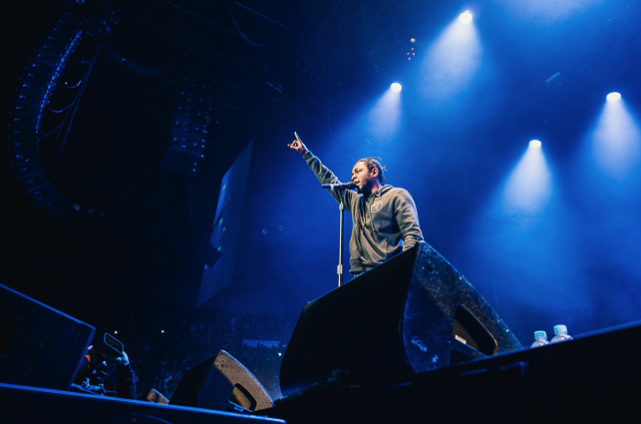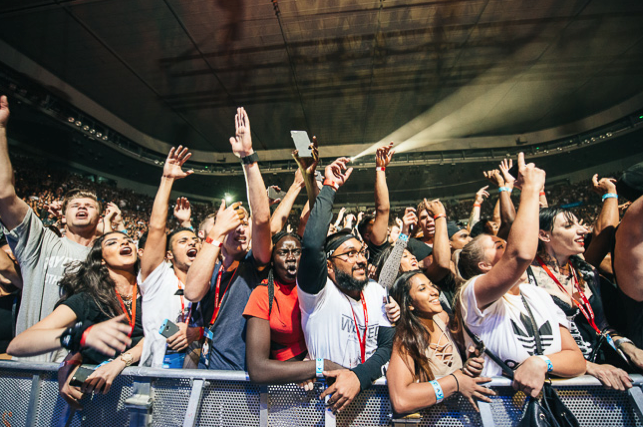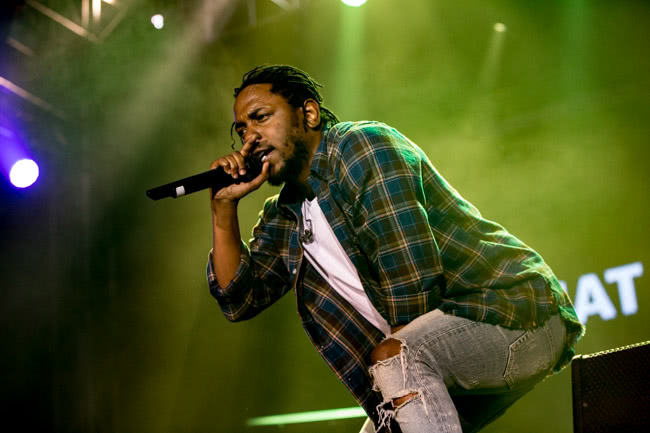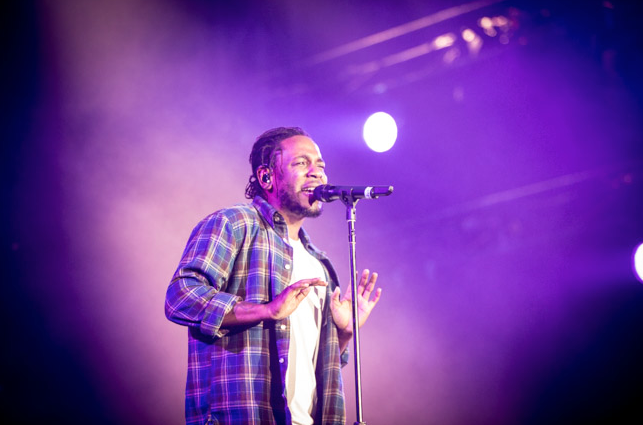Ask anyone well embedded into the music scene, and they’ll need little prompting to point out Kendrick Lamar as one of the greatest musical talents of today. At Carrie Brownstein’s recent Q & A at Melbourne’s Town Hall, she expressed her penchant for popular music, announcing that she had spent most of the previous week listening to Lamar’s 2016 collection of B-sides untitled unmastered on repeat in the car.
When we recently interviewed The National’s Aaron Dessner, as well as commending Bluesfest 2016 acts Jason Isbell and Nathaniel Rateliffe, Dessner was quick to praise Lamar as one of the standout acts on the bill.
With the endorsement of his peers, seven Grammy Awards to his name, and over 10 million monthly listeners on Spotify, the Kendrick effect is undeniable.

But what does Lamar have that other rappers don’t?
Off the back of his breakthrough release, good kid, m.A.A.d city, music critic Jessica Hopper articulated why Lamar has such broad appeal. Though like many of his rap contemporaries, Lamar grew up around gangs and violence in Compton, LA – even his parents had some form of involvement – he’s one of the ones who “got out,” and pursues a career seemingly disentangled from the drugs, crime and violence that tend to characterise contemporary hip hop culture.
As Lizzy Goodman wrote while on his support tour for Kanye West “When I was on the road with Lamar, he didn’t drink, and in general, his crew followed suit. This is part of his commitment to staying focused on his singular ambition: greatness.”
Two years on, there was that same focus when Lamar took to the Rod Laver Arena stage, the first of his three Australian shows. Unlike West who might install back-up dancers or heavy costuming, Lamar was dressed simply in a grey hoodie, jeans and sneakers – he was here to rap, and nothing else – a 5-piece jazz band was his only embellishment.
To the chanting of “Kendrick! Kendrick!” Lamar stood at the front of the stage. He paused, squinting at the audience, taking trips to different sides of the stage to bask in their adoration and observe the full extremities of the venue. This only gave more urgency to the cheering, which transitioned to “We gon’ be alright!” in recognition of his unofficial soundtrack to last year’s #BlackLivesMatter movement, reinforced into the collective consciousness with his intense Grammys performance in February this year.

Lamar’s lyrics are inherently political. Though big kid, m.A.A.d city is anchored in his past, his stories are fuelled with anger and a no-holds-barred approach to telling how it is – the perfect precursor to his observations of what present-day life is like for Black people in America in To Pimp a Butterfly.
It seemed perfect then, that Lamar opened all three shows with the fast-talking ‘For Free’, his commentary on success as a double-edged sword. Though some of the Bluesfest regulars weren’t quite ready for the crowds that came with his popularity, his mind-bending articulation skills coupled with the song’s free-flowing jazz undercurrent epitomise his status as not just another rapper but also a highly intelligent experimental artist.
Saxophonist Kamasi Washington features on To Pimp A Butterfly, so it made sense that Washington’s skilful band played a blistering support slot for the Melbourne show.
No doubt Lamar and Washington would have been hanging out backstage in between sets at Bluesfest. For Lamar’s Sydney show, the line-up was a more local affair featuring Sampa the Great, the genre-bending rapper a fitting choice to complement Lamar’s likeminded work.
Dubbed “the thinking person’s rapper,” Lamar’s talent doesn’t end at his thought-provoking poetry – he knows how to corral a crowd too. It was only a month ago that he released untitled unmastered, and though his audiences beckoned the tracks on that album to be played, his shows focussed on hits from To Pimp A Butterfly and good kid, m.A.A.d city. “Put your hands up everyone!” he would yell, the audience transformed into a sea of arms moving to the beat.

Songs like ‘Swimming Pools (Drank)’ and ‘m.A.A.d city’ were roof-lifting party anthems. Though his lyrics were provocative, the musical composition of the soundtracks and Lamar’s rap rhythms provided broad appeal in their own right.
Lamar’s shows were also an opportunity to preach to his eager followers. He took some time at his Sydney show to pay respects to the late Phife Dawg.
In Melbourne he thanked the audience for allowing him to make To Pimp a Butterfly, what he described as “pure music you can relate to… me and you are the same, I believe in every single one of you.” Almost taking on the role of a preacher, he encouraged everyone to keep going even if life felt worthless.

Though words of encouragement can often feel like empty promises, Lamar’s shows highlighted that despite all the darkness in his lyrics, there is a positive inflection to his act. There were palpable feelings of hope for ‘Alright’, and a sense of empowerment in ‘King Kunta’.
Asking his audiences to shine their phone torches, the stunning light display for ‘A.D.H.D’ in Melbourne and as part of his Phife Dawg tribute in Sydney gave the feeling that everyone in monolith the stadiums were all one.
Like many hip-hop artists who are experiencing mainstream success such as Danny Brown and A$AP Rocky, Lamar indulges in liberal use of N-words and “bitches,” and speaks frankly about the struggles that come with being Black in America. But, it seems, Lamar digs deeper.
Lamar is angry, but not violent; he’s political, but socially conscious. Importantly, his shows go off, but in a way that is uplifting rather than hardcore and he never relies on ‘showy’ tactics to keep the audience on side. It is thanks to these nuances that he is one of the most compelling voices of his generation. This passionate man’s goal for greatness is becoming very real.

































